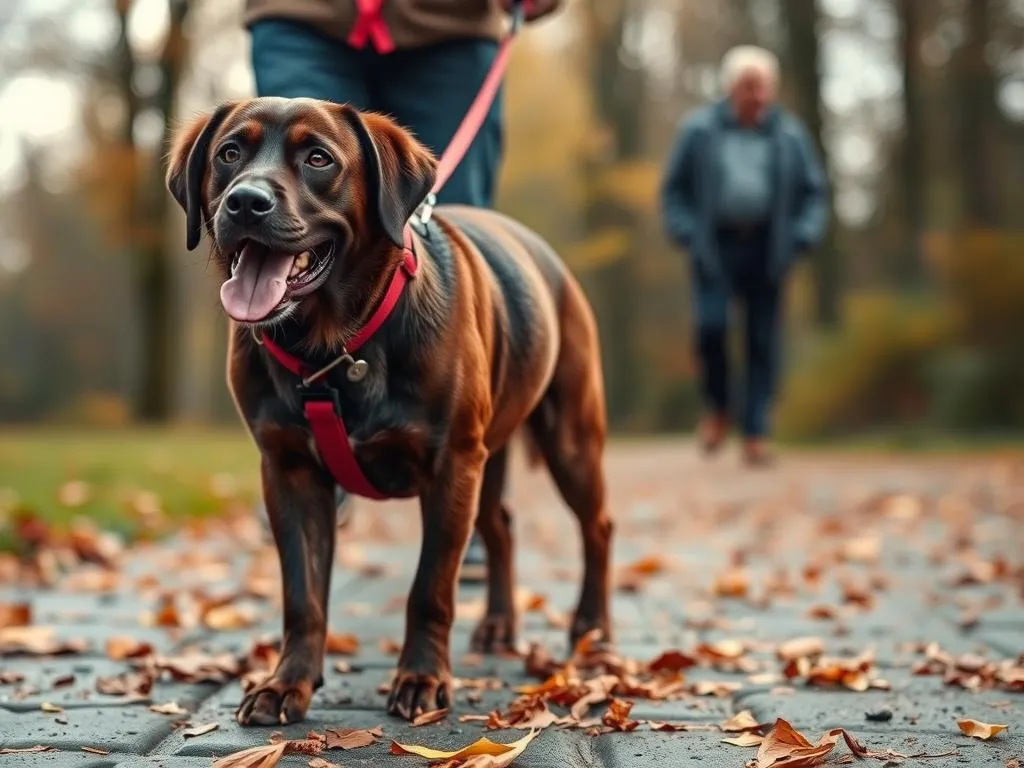
The demand for dog walkers is on the rise, fueled by busy lifestyles and a growing awareness of the importance of regular exercise for dogs. How to become a great dog walker is a question many pet enthusiasts are asking as they seek flexible job opportunities that align with their love for animals. Dog walking not only promotes pet health and socialization but also allows individuals to earn a living while spending time outdoors with furry friends.
Understanding the Role of a Dog Walker
Definition of a Dog Walker
A dog walker is responsible for taking dogs on walks, providing them with exercise and mental stimulation. This role can range from casual walking services for friends and neighbors to professional dog walking businesses. Understanding the nuances between casual and professional dog walking is crucial for anyone looking to enter this field.
Responsibilities of a Dog Walker
The daily tasks of a dog walker extend beyond just walking. Responsibilities typically include:
– Walking dogs for specified durations.
– Feeding or administering medication if required.
– Ensuring dogs are safe and secure during walks.
– Maintaining cleanliness by picking up after the dogs.
Safety and well-being are paramount in this role, as dog walkers often encounter various environments and situations.
Benefits of Dog Walking
Dog walking offers numerous benefits:
– Physical Health: Regular walks help maintain a dog’s healthy weight and promote overall fitness.
– Emotional Well-being: Both dogs and walkers experience improved mood and reduced stress through physical activity.
– Socialization: Dogs get to interact with other pets and people, enhancing their social skills.
Essential Skills and Qualities of a Great Dog Walker
Animal Handling Skills
Being great at handling different dog breeds and sizes is essential. Each breed has its unique characteristics, and understanding dog body language can significantly improve your interactions. Recognizing signs of stress or aggression can help prevent incidents and ensure a positive experience for both the walker and the dogs.
Physical Fitness
Walking dogs, especially energetic ones, requires physical fitness. Maintaining a good level of fitness not only helps in managing the dogs but also ensures that you can keep up with them. Regular exercise, such as jogging or strength training, can improve your stamina for long walks.
Communication Skills
Effective communication with dog owners is key. Understanding their needs and preferences helps in providing personalized service. Additionally, building rapport with dogs is equally important; a friendly demeanor can help dogs feel comfortable and safe.
Problem-Solving Abilities
Unexpected situations may arise during walks—whether it’s dealing with an aggressive dog or losing a dog. Quick thinking and problem-solving skills are vital to ensure the safety of the dogs in your care. Familiarizing yourself with common issues and having a plan can make a significant difference.
Getting Started as a Dog Walker
Research and Understanding Local Laws
Before launching into dog walking, it’s crucial to understand local regulations. Research any permits or licenses that may be necessary in your area. Compliance with local laws not only protects you but also establishes your credibility as a professional.
Gaining Experience
Experience is invaluable. Volunteering at animal shelters, pet sitting, or walking friends’ dogs can provide hands-on experience. Building credibility through references and testimonials is essential for gaining potential clients’ trust.
Building a Portfolio
Creating a resume or portfolio that highlights your skills and experiences is an important step. Include any relevant certifications, testimonials from previous clients, and a brief description of your experience with various breeds. This helps in showcasing your expertise to potential clients.
Setting Up Your Dog Walking Business
Choosing a Business Model
When deciding how to become a great dog walker, consider the business model that suits you best. Options include:
– Freelance: Setting your own schedule and rates.
– Joining a Dog Walking Service: Gaining immediate clients but sharing a portion of earnings.
– Starting Your Own Business: Full control but requires more effort in marketing and management.
Each model has its pros and cons; choose one that aligns with your goals and lifestyle.
Pricing Your Services
Setting competitive rates is essential for attracting clients. Factors to consider include:
– Location: Cost of living in your area.
– Experience: More experience often warrants higher rates.
– Services Offered: Additional services such as dog training can justify higher fees.
Research local competitors to find a pricing structure that is affordable yet profitable.
Marketing Your Services
Effective marketing strategies can help promote your dog walking business:
– Social Media: Use platforms like Instagram and Facebook to share photos and stories of your walks.
– Flyers: Distribute flyers in local pet stores and community centers.
– Word-of-Mouth: Encourage satisfied clients to refer you to their friends and family.
Networking with local pet businesses can also create collaboration opportunities, enhancing your visibility.
Tools and Equipment for Dog Walking
Essential Gear
Equipping yourself with the right gear is crucial for a successful dog walking experience. Essential items include:
– Leashes and Harnesses: Ensure they are appropriate for the size and breed of the dog.
– Waste Bags: Always clean up after the dogs to maintain a good reputation.
– Water Bottles: Hydration is key, especially on hot days.
Investing in high-quality products will ensure durability and safety during walks.
Technology and Apps
Utilizing technology can greatly enhance your dog walking service. Apps can help with:
– Scheduling: Manage your appointments efficiently.
– Payments: Simplify transactions with clients.
– Tracking Walks: Provide owners with insights into their dog’s activity.
Using technology can streamline operations and improve communication between you and the dog owners.
Ensuring Safety and Well-being
Dog Safety Protocols
Prioritize assessing a dog’s behavior before walking. Pay attention to any signs of anxiety or aggression. Additionally, be aware of your surroundings to avoid dangerous situations, such as busy traffic or aggressive animals.
Personal Safety Tips
Your safety is just as important. Stay aware of your surroundings, especially in unfamiliar areas. Carry emergency contact information, and consider investing in a personal alarm or pepper spray for additional safety.
Health Considerations
Familiarize yourself with common dog health issues. Understanding what to look for during walks can help in identifying potential health problems early on. Staying informed about basic dog first aid can be beneficial for any emergencies that may arise.
Building Relationships with Dogs and Their Owners
Establishing Trust with Dogs
Building trust with dogs quickly is essential for a successful walking experience. Use calm, positive reinforcement techniques to encourage good behavior. Consistency in your approach will help dogs feel secure and comfortable.
Communicating with Dog Owners
Keep dog owners updated on their pet’s activities. Regular communication helps build trust and allows for discussions about any concerns or behavioral issues. Establishing a rapport with owners can lead to long-term client relationships.
Creating a Loyal Client Base
Retaining clients is crucial for any dog walking business. Implement strategies such as loyalty programs or regular updates to keep them engaged. Asking for feedback and testimonials can also improve your services and adapt to client needs.
Conclusion
Becoming a great dog walker involves understanding the intricacies of the role, developing essential skills, and creating meaningful relationships with both dogs and their owners. The journey to mastering this profession requires dedication, empathy, and a genuine love for dogs. Embracing this passion not only leads to personal fulfillment but also positively impacts the community by ensuring dogs receive the care and exercise they need.
Whether you are an aspiring dog walker or simply a pet enthusiast, the rewarding nature of this job, combined with the joy of spending time with animals, makes it a fulfilling career path. Embrace the opportunity to make a difference in the lives of dogs and their owners while enjoying the companionship of furry friends.









